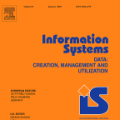Spatial data is ubiquitous in our data-driven society. The Logic Programming community has been investigating the use of spatial data in different settings. Despite the success of this research, the Geographic Information System (GIS) community has rarely made use of these new approaches. This has mainly two reasons. First, there is a lack of tools that tightly integrate logical reasoning into state-of-the-art GIS software. Second, the scalability of solutions has often not been tested and hence, some solutions might work on toy examples but do not scale well to real-world settings. The two main contributions of this paper are (1) the Relation Based Programming paradigm, expressing rules on relations instead of individual entities, and (2) Geolog, a tool for spatio-logical reasoning that can be installed on top of ArcMap, which is an industry standard GIS. We evaluate our new Relation Based Programming paradigm in four real-world scenarios and show that up to two orders of magnitude in performance gain can be achieved compared to the prevalent Entity Based Programming paradigm.
翻译:在我们的数据驱动社会,空间数据无处不在。逻辑编程社区一直在调查在不同环境中使用空间数据的情况。尽管这项研究取得了成功,地理信息系统社区很少使用这些新方法。这主要有两个原因。第一,缺乏将逻辑推理紧密纳入最新地理信息系统软件的工具。第二,解决方案的可伸缩性往往没有经过测试,因此,一些解决方案可能针对玩具范例起作用,但不足以适应现实世界的设置。本文的两个主要贡献是:(1) 以关系为基础的编程范式,表达关于关系而不是个别实体的规则,(2) Geolog,这是一个可以在ArcMap顶部安装的线形逻辑推理工具,这是一个行业标准的地理信息系统。我们评估了我们在四种现实世界情景中新的基于关系的规划范式,并表明,与普遍的实体基于方案编制范式相比,可以实现多达两个规模的业绩增益。


